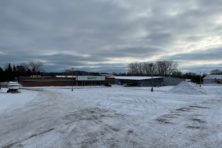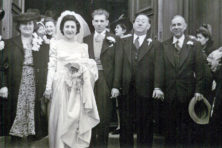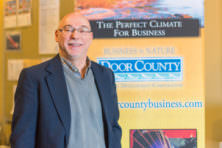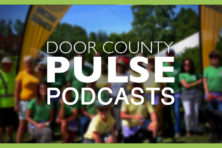Sturgeon Bay Native Recalls Arizona Shooting Scene
- Share
- Tweet
- Pin
- Share
For Sturgeon Bay native Anne Davies, the neighborhood shopping center where she went to run errands Jan. 8 provided a reminder of her hometown.
“I knew everyone up there,” Davies said. “It’s the kind of place where you know the employees, where you run into friends.”
Davies graduated from Sturgeon Bay High School as Anne Zuehlke. Her affinity for the small-town feel is still strong some three decades later, and it has never been stronger than it was on Jan. 8, when Davies went out to develop some film in her adopted community of Tucson, AZ.
“It’s 10 am on a Saturday morning, and I’m thinking this is just a great morning after a hard week at work,” she recalled by phone last week. “Being from Door County and Wisconsin, I’ve always reached out to people. That little community up there [by the Safeway] is where I go to see people I recognize. It’s my little Wisconsin.”
She saw Democratic Congresswoman Gabrielle Giffords set up in front of the Safeway store as she parked, and Davies wanted to say hello. Davies has worked for 21 years as a physiologist at Tucson Medical Center, where Giffords’s uncle is one of her cardiac patients. But the line was too long, so she figured she’d step into the adjacent Walgreens, get her photos developed, and introduce herself on the way out.
“Gabby Giffords is hugely popular here,” Davies, a Republican, said. “She tends to be more moderate, and she tried to talk to and listen to everybody.”
Davies stepped out of the calm, sun-swept Saturday morning and into Walgreens, where she sat at a photo kiosk. As she finished, a man came into the store, “there’s a shooting! Someone needs to call 911!”
Several customers started dialing. The store was put on lockdown, but then someone brought in a man who had been shot in the foot. Davies grabbed a doggy bed from an aisle for the man to rest his head on, then held his hand as he laid on the floor.
Another person rushed in. “There are dead people out there,” she said.
“I looked at the man,” Davies recalled, “and said ‘it looks like you’re going to be one of the lucky ones.’“
Another person came into Walgreens now.
“They’re sitting on him. He’s just a boy!”
Davies pictured a high school kid, and her mind wandered for a moment.
“What could be so wrong in that child’s life that he would do this?” Davies thought.
Soon, a person ran into the Walgreens looking for someone who knew CPR, and Davies went outside to help. She found a scene she fears she’ll never shake. It wasn’t chaotic, but surreal.
“There was little I could do or that CPR would help,” she said. “People were already dead.”
Davies said people weren’t panicked, but were working together. Still, the scene was shocking.
“It was very disturbing,” she said. “Nothing can prepare you for that. I’ve worked with heart patients for 25 years and have never experienced anything like it.”
She saw Giffords sitting up against a wall, an aid holding her head, keeping her talking. “Her head was a mess,” Davies said. She’s shocked that Giffords survived. “There were some very, very brave people there that you’re not going to see on the news or hear anything about.”
There was a man holding a young girl, and I asked if he wanted me to hold her for a while. The man wouldn’t leave, and Davies moved on. She had to cover up one woman who had died. “They were all head and chest wounds,” she said. “The shooter was definitely trying to do exactly what he did.”
There was very little screaming at the scene, Davies said. People were giving directions and guidance. People wanted to help. But Davies said she felt mostly helpless.
When the paramedics arrived, she left, her clothes covered in blood.
“It’s cliché to say ‘go home and hug your babies,’ but I had to,” Davies said. She has three adult girls, age 18, 22, and 23.
Davies’s husband is a judge, a colleague of Judge John Roll, the Federal Judge who was one of six people killed by the shooter.
Several days after the event, she still struggled to gain perspective on what she experienced.
Davies, and the city of Tucson, one she describes as a small community with a big population, is struggling to figure out the next step.
“If you’re fearful and miserable than the shooter wins,” she said. “You try to be a better parent, a better self, a less angry person. I haven’t figured out how to turn it into a positive yet, but I’m trying. As a nation we need to step back and ask ‘What are we doing?’ Is anything worth a little girl’s life? Our differences aren’t that great.”
Days after experiencing something she’ll never forget, after witnessing a scene forever etched into her memory, she yearned even more for the comfort of her hometown.
“I sure wish I was home,” she said. “I know it could happen anywhere, but I really want to be back there now. If you see my sister, giver her a hug for me please.”




